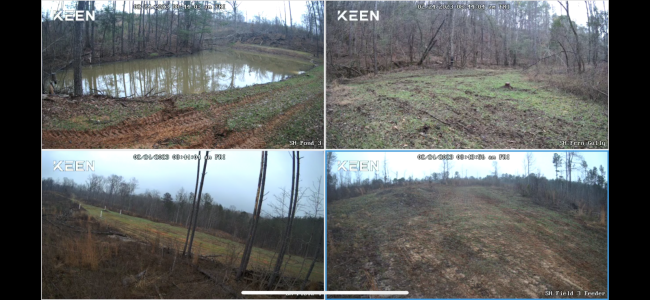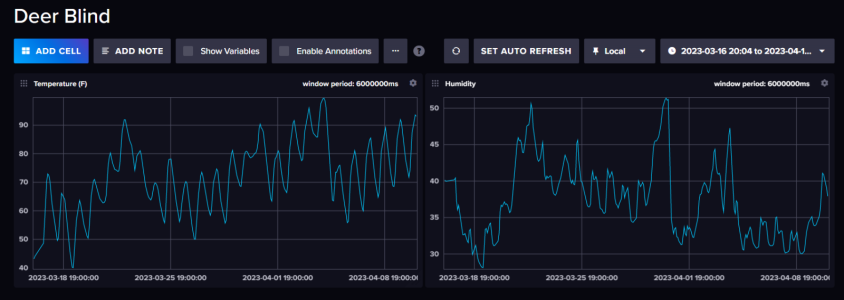Is anyone else using security cameras and NVRs (network video recorder) as trail cameras?
If so I'd be curious to hear what you're using, what has worked well for you, and what hasn't.
I'm just getting started, but here's what I've got so far
Power:
I have 400 watts of solar panels, a charge controller, and a 100ah lifepo4 battery, on my deer blind. Everything is powered DC, there is no inverter in the system. There are 3 DC buck converters to get the necessary DC voltages to power things.
Internet access:
Internet access is an old cell phone tethered to a raspberry pi. One frustration is that the tethering app on the phone requires I click something to restart it after a power off. So if its overcast for too many days and the system goes down temporarily, the NVR doesn't have internet access until I get back down there and touch the phone. I changed battery charge settings recently. If that doesn't fix it, I'll add another battery. Eventually we'll probably get satelite internet access.
Cameras:
I've been buying Reolink security cameras for years for home and elsewhere and been very pleased with them, so that's what I'm using. To get started, I got an 8 channel NVR with 4 cameras (4k / 8mp) with the smart/AI motion detection that identifies people and vehicles. The smart motion detection is a huge improvement over the old motion detection on my cameras at home. I set it to alert me for people and vehicles. So far I've not gotten any false alarms and if I walk or drive up to the blind my phone dings before I get to the door telling me there is a person or vehicle there.
With the current drive in the NVR and camera count, I get 1 week of 24/7 4k video. I have the motion detection flagging points of interest in the video, but the video is recored regardless.
Night vision is disappointing because the IR LEDs on the cameras aren't very bright. On my home cameras I've disabled the IR on the cameras to avoid drawing insects to the cameras at night. Instead I have external IR lights that light up much better. At some point I may do that around the blind.
future plans:
- I'll be adding pan-tilt-zoom cameras, which are controlable over the phone.
- I'll be building an equipment storage building, which will also have solar, and more cameras.
- In the next few years we'll build a tiny house out there, which will also have solar, and more cameras.
- I need to make a plow for burying wire, then I'll bury cat5 cable to put PoE cameras scattered around the property.
If anyone is doing anything similar I'd like to compare approaches.
Here's the battery, NVR & charge controller in an insulated box:
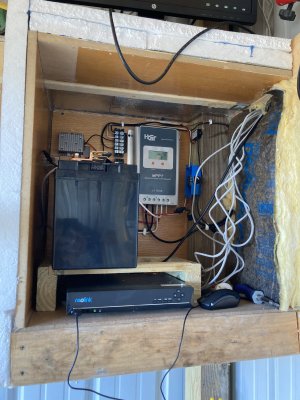
Solar panels:
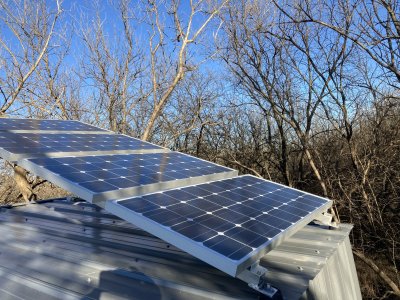
Monitor inside the blind:
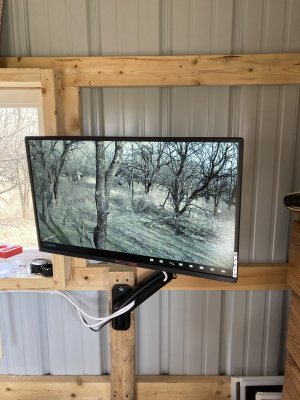
The view from some cameras (these are still photos taken from the video feed):
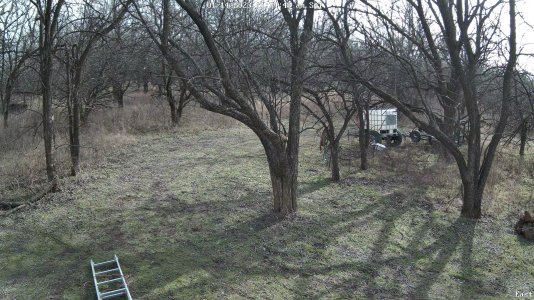

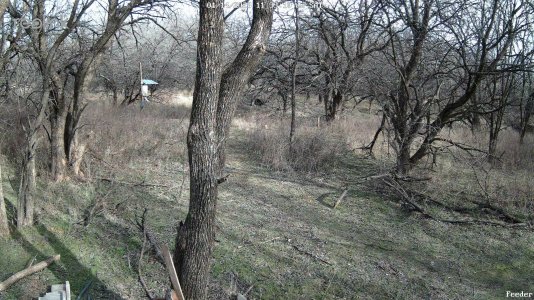
If so I'd be curious to hear what you're using, what has worked well for you, and what hasn't.
I'm just getting started, but here's what I've got so far
Power:
I have 400 watts of solar panels, a charge controller, and a 100ah lifepo4 battery, on my deer blind. Everything is powered DC, there is no inverter in the system. There are 3 DC buck converters to get the necessary DC voltages to power things.
Internet access:
Internet access is an old cell phone tethered to a raspberry pi. One frustration is that the tethering app on the phone requires I click something to restart it after a power off. So if its overcast for too many days and the system goes down temporarily, the NVR doesn't have internet access until I get back down there and touch the phone. I changed battery charge settings recently. If that doesn't fix it, I'll add another battery. Eventually we'll probably get satelite internet access.
Cameras:
I've been buying Reolink security cameras for years for home and elsewhere and been very pleased with them, so that's what I'm using. To get started, I got an 8 channel NVR with 4 cameras (4k / 8mp) with the smart/AI motion detection that identifies people and vehicles. The smart motion detection is a huge improvement over the old motion detection on my cameras at home. I set it to alert me for people and vehicles. So far I've not gotten any false alarms and if I walk or drive up to the blind my phone dings before I get to the door telling me there is a person or vehicle there.
With the current drive in the NVR and camera count, I get 1 week of 24/7 4k video. I have the motion detection flagging points of interest in the video, but the video is recored regardless.
Night vision is disappointing because the IR LEDs on the cameras aren't very bright. On my home cameras I've disabled the IR on the cameras to avoid drawing insects to the cameras at night. Instead I have external IR lights that light up much better. At some point I may do that around the blind.
future plans:
- I'll be adding pan-tilt-zoom cameras, which are controlable over the phone.
- I'll be building an equipment storage building, which will also have solar, and more cameras.
- In the next few years we'll build a tiny house out there, which will also have solar, and more cameras.
- I need to make a plow for burying wire, then I'll bury cat5 cable to put PoE cameras scattered around the property.
If anyone is doing anything similar I'd like to compare approaches.
Here's the battery, NVR & charge controller in an insulated box:

Solar panels:

Monitor inside the blind:

The view from some cameras (these are still photos taken from the video feed):



